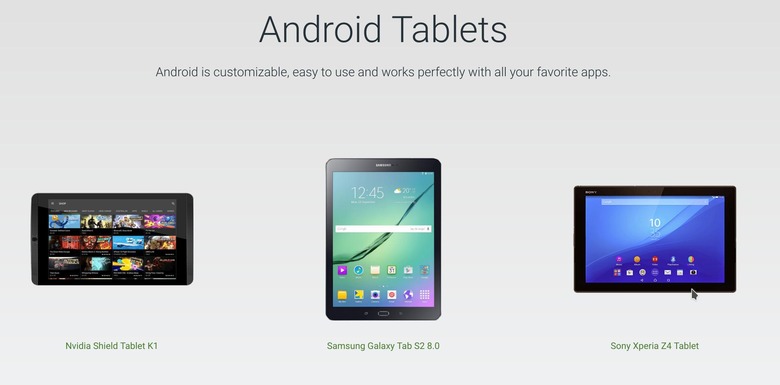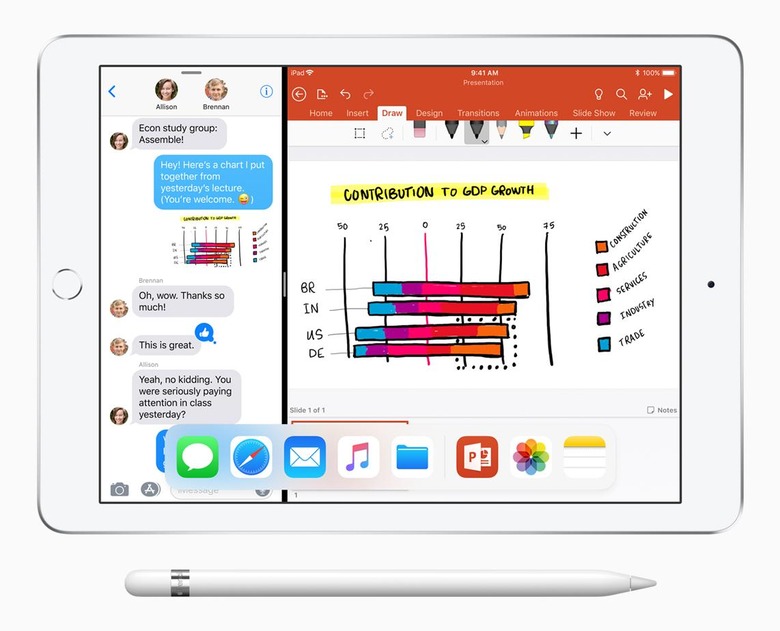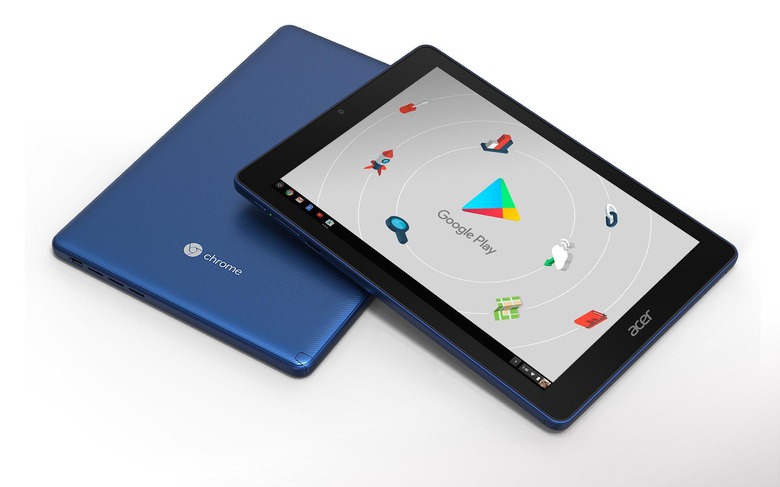Tablets Are Dead, Long Live Chrome Tablets!
Google experience a glitch in the matrix over the weekend where the last traces of Android's tablet existence vanished without a trace. Evidence that there were, once upon a time, such things as Android tablets has since then returned but their sudden and silent removal served to confirm what many have been expecting to happen sooner rather than later. If Google is to be asked, tablets are pretty much dead in the water. Unless, of course, you're talking about the new line of Chrome tablets and 2-in-1 devices.
Over the weekend, Android Police noticed that the Android website was suddenly without its usual Tablet section. It was immediately considered to be the final straw that will break the Android tablet camel's back. Google SVP for Android Hiroshi Lockheimer tweeted Sunday, however, that it was simply a bug when the website was updated and that all is well in the Android world.
Oops we had a bug when we updated the site. It's back up now. Sorry for the confusion! https://t.co/5mI3L3Gzif
— Hiroshi Lockheimer (@lockheimer) June 3, 2018
Well, not quite. Unless there's still an unresolved bug in the website, the only tablets that can be found there are the Samsung Galaxy Tab S2, the NVIDIA SHIELD Tablet K1, and the Sony Xperia Z4 Tablet. All three date back to 2015 and, save for the SHIELD Tablet K1, none have received any significant update recently. Considering that Google's own Store no longer carries any Android tablet either, you can pretty much put two and two together.

Google never really had any love for tablets if you think hard about it. It might have acquiesced to the form factor after it gained popularity, but it might have never planned on it nor was it married to the idea. That is pretty much evident in how it rushed the infamous 3.0 Honeycomb release and how it has not exactly been making tablet-friendly changes to the platform, despite the popularity of the iPad. And the few times it did, like split screen windows or the Pixel C tablet, it almost felt half-hearted.
That's a rather odd position to take, given how Apple's iPads have made slate (as opposed to convertibles and 2-in-1s) a common thing. It wasn't smooth sailing for Apple either but it has always come up with ways to reinvigorate the market. First was the iPad Pro and the mighty Pencil and, just this year, a cheaper 2018 iPad that was compatible with that same stylus.

Google, however, wasn't simply turning a blind eye. As it turns out, it might have just been laying the foundations to what could be the one stone that hits all the poor birds. That stone is named not Fuchsia but Chrome OS. Google pretty much revealed its strategy when, just a mere day or so before Apple's iPad announcement, it launched the first ever Chrome OS tablet similarly marketed at schools and students. With its support for Android apps and upcoming support for Linux virtual machines, Chrome OS is shaping up to be more than what Android on tablets has ever been: an all-in-one productivity platform.
That said, Google will still face the same problems that both Android and Chrome OS experienced. While the two's merged app stores may bring more choices to the table, even their combined strength might not be enough to replace your laptop. Not a problem for Linux users, of course, but not all software, especially the popular proprietary ones, run on it.

Long story short, Android tablets have no future with Google, no matter how much Android fans wish it were otherwise. Google is throwing them a bone by making their favorite Android apps available on Chrome OS, but it's not going to be completely the same. Chrome OS and Chromebooks are being groomed to do what Android tablets have not been able to in terms of productivity and usability. So while it might still be running the life support machine, Android tablets are practically dead for Google. Long live Chrome tablets!
